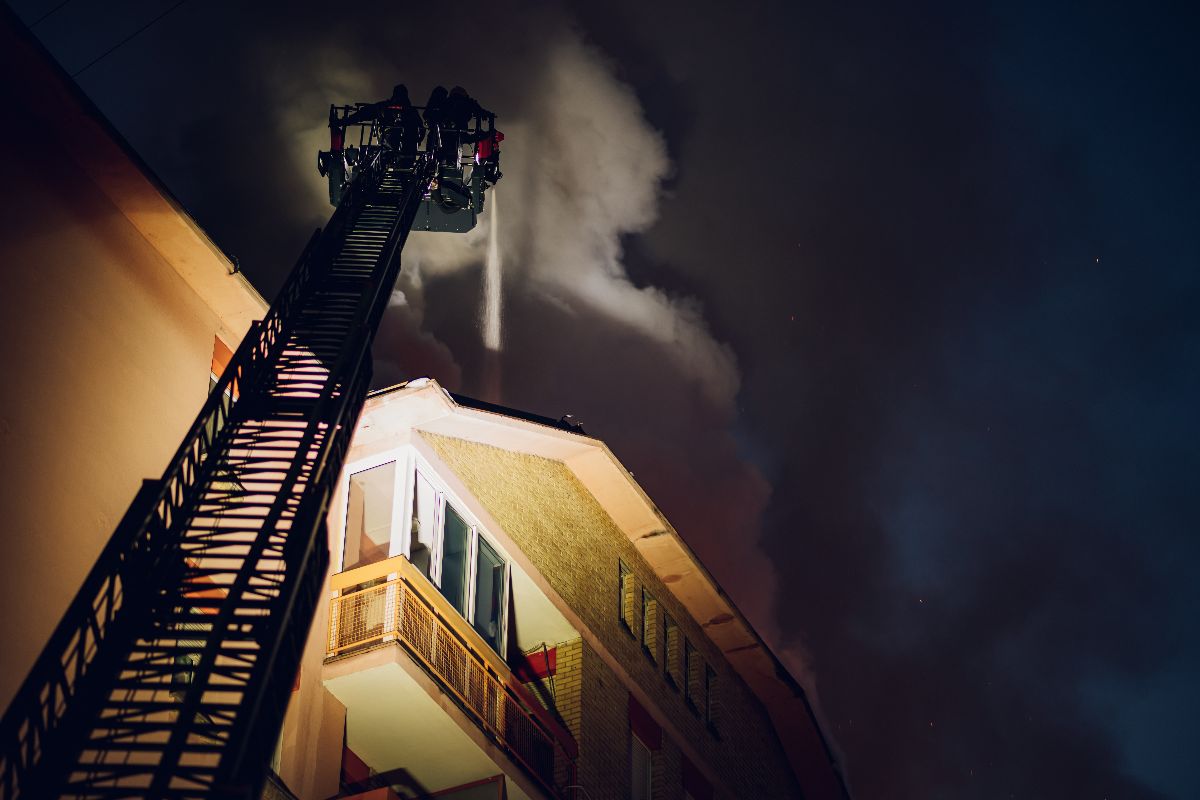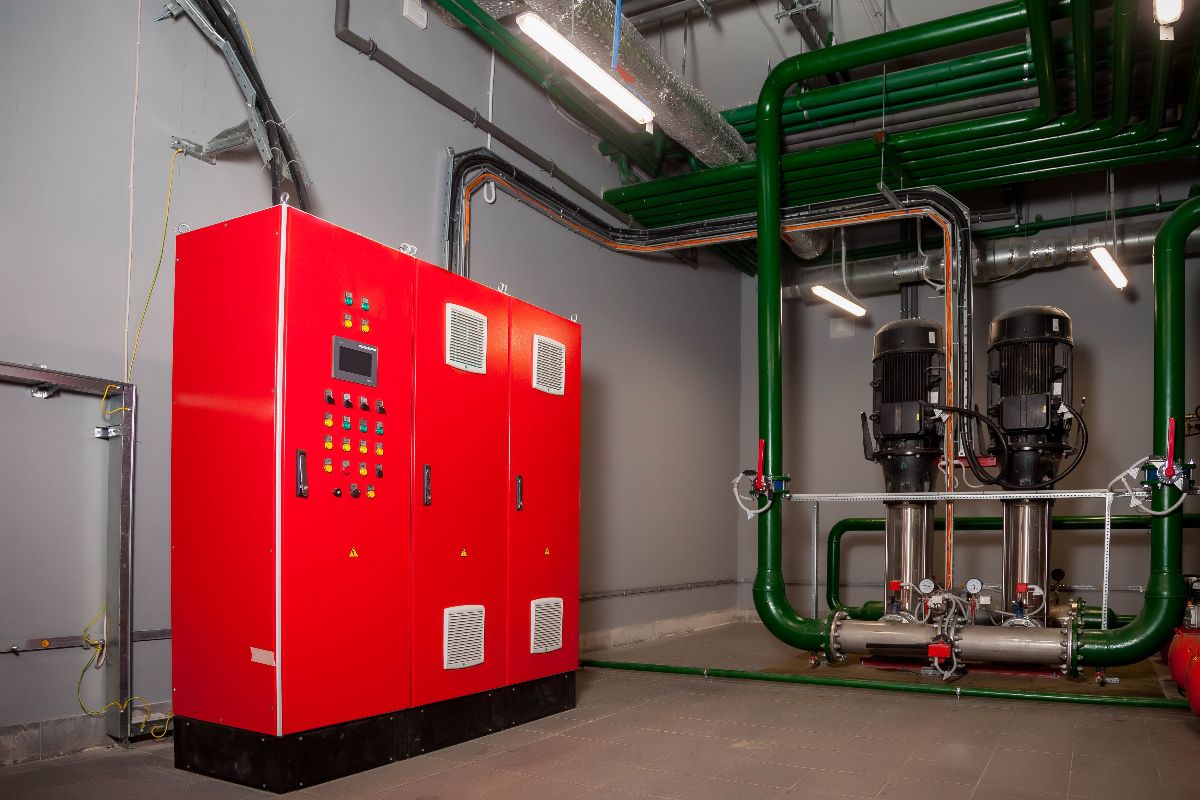What are the Components of a Fire Detection and Alarm System in the Philippines?
 June 3, 2024
June 3, 2024

What are the components of a fire detection and alarm system in the Philippines?
- Fire alarm control panel
- Initiating device
- Notification devices
- Manual pull station
- Power supply
Overview
- This article delves into the intricacies of fire detection and alarm systems in the Philippines. It explores the critical components of these systems, such as the Fire Alarm Control Panel (FACP), initiating devices, notification devices, manual pull stations, and power supplies.
- Understanding each element’s function is vital for ensuring effective fire safety measures in buildings.
The Philippines has a tropical climate and densely populated areas. Due to these, it is at risk of fire outbreaks. That’s why fire detection and alarm systems are mandated by the Bureau of Fire Protection (BFP) in buildings to protect lives and property.
In this article, we will explore the components of a fire detection and alarm system in the Philippines. Understanding each and its function is essential to ensure it operates effectively and provides the necessary protection in a fire emergency.
Fire Alarm Control Panel
The fire alarm control panel is the central hub of the entire system. It receives signals from various initiating devices, including smoke detectors, heat detectors, and manual pull stations. It analyzes these signals to determine if a fire event is happening. Following this, it triggers alarms throughout the building.
Furthermore, it connects to additional building systems. For instance, integration with building automation systems or fire communication systems allows for functionalities like automatic elevator recall to designated floors, automatic door unlocking for evacuation routes, or sending fire alarm notifications to designated emergency personnel.
These advanced features can significantly improve response times and overall building safety during a fire emergency.
Initiating Device

Fire alarm systems typically utilize a combination of initiating devices to cater to various fire scenarios, including:
- Smoke Detectors. They detect smoke particles, ideal for early detection of smoldering fires.
- Heat Detectors. They respond to rapid increases in temperature, suitable for detecting fast-growing fires.
- Manual Pull Stations. They allow anyone to manually activate the alarm in case of a fire they visually detect.
These initiating devices act as frontline sensors, detecting the presence of fire through various methods and sending a signal to the FACP to initiate the alarm sequence.
Notification Devices
Fire doesn’t wait, and neither can your building’s fire safety system. Notification devices prompt occupants to react quickly and evacuate the building during a fire emergency. They are carefully positioned throughout the building to achieve maximum coverage. This ensures the alarm reaches occupants in all areas, even those located far from the fire’s origin. Their loud and distinctive sounds, combined with the flashing lights of strobe beacons, are designed to grab attention effectively.
Furthermore, they are designed to transcend language barriers. The standardized sounds and visual signals are universally understood, ensuring effective communication of the fire emergency to everyone present, regardless of their background. This eliminates confusion and delays during critical evacuation moments.
Manual Pull Station

Smoke detectors and heat detectors are excellent at automatically detecting fires. However, there may be situations where a fire isn’t readily apparent to these automated systems. A manual pull station empowers anyone who visually spots a fire to immediately activate the alarm, providing the earliest possible warning to occupants.
These crucial safety devices are typically bright red, rectangular boxes mounted on walls at an easily reachable height (around shoulder level) for quick access. A clear glass or plastic window reveals a red pull handle inside.
To activate the alarm, simply pull down the handle firmly and completely. This action breaks a seal or activates a switch, sending a signal to the FACP and triggering the fire alarm system—initiating the evacuation process.
Power Supply
Fire emergencies can disrupt electrical systems, potentially causing power outages. To prevent this from compromising safety, fire alarm systems are equipped with a built-in backup power supply, typically a robust battery bank. This ensures a smooth transition to backup power in case of a primary power outage, guaranteeing the system remains operational during a critical fire emergency.
Most systems utilize a dual power supply configuration for added reliability. The primary source draws power from the main electrical grid, while the secondary source is the battery backup. This ensures the system remains functional even if the main power fails.
Crucially, the battery backup system’s capacity and health are vital. It must provide sufficient power to operate the fire alarm system for a defined period, typically 24 hours in standby mode and 5 minutes in alarm mode, as mandated by the BFP.
Key Takeaway
All the components of fire detection and alarm systems in the Philippines create a comprehensive fire safety system that provides early warning and allows for timely evacuation, saving lives and minimizing property damage in the event of a fire.
Industrial PH is your trusted partner in fire safety solutions. We offer high-quality fire alarm systems specifically designed for commercial and industrial environments. Our commitment to quality translates into reliable fire alarm systems built to perform under pressure. Reach out to us now to find out more about our services.



